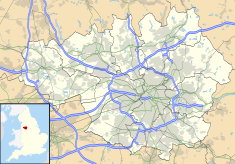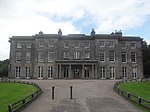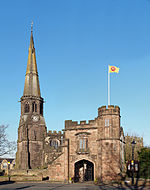
The Christchurch Town Hall, since 2007 formally known as the Christchurch Town Hall of the Performing Arts, opened in 1972, is Christchurch, New Zealand's premier performing arts centre. It is located in the central city on the banks of the Avon River overlooking Victoria Square, opposite the former location of the demolished Christchurch Convention Centre. Due to significant damage sustained during the February 2011 Christchurch earthquake, it was closed until 2019. Council staff initially recommended demolition of all but the main auditorium, but at a meeting in November 2012, councillors voted to rebuild the entire hall. In 2020, the town hall was registered as a Category I heritage building.

Wigan Council, or Wigan Metropolitan Borough Council, is the local authority of the Metropolitan Borough of Wigan in Greater Manchester, England. It is a metropolitan borough council and provides the majority of local government services in the borough. The council has been a member of the Greater Manchester Combined Authority since 2011.

Reading Civic Centre was a civic centre in the town of Reading, itself in the English county of Berkshire. The centre dated from the mid-1970s.

The Market Hall, in Priory Street, Monmouth, Wales, is an early Victorian building by the prolific Monmouth architect George Vaughan Maddox. It was constructed in the years 1837–39 as the centrepiece of a redevelopment of part of Monmouth town centre. After being severely damaged by fire in 1963, it was partly rebuilt and was the home of Monmouth Museum from 1969 to 2021. At the rear of the building are original slaughterhouses, called The Shambles, opening onto the River Monnow. The building is Grade II listed as at 27 June 1952, and it is one of 24 buildings on the Monmouth Heritage Trail. The Shambles slaughterhouses are separately listed as Grade II*.

Leigh Town Hall is a municipal building in Leigh, Greater Manchester, England. It stands in Civic Square at the junction with Market Street, facing Leigh parish church. It was built in 1907 and granted grade II listed building status in 1987.
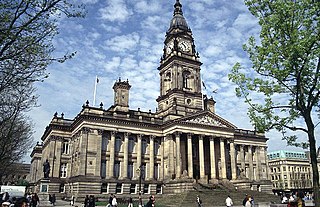
Bolton Town Hall in Victoria Square, Bolton, Greater Manchester, England, was built between 1866 and 1873 for the County Borough of Bolton to designs by William Hill of Leeds and George Woodhouse of Bolton. The town hall was extended in the 1930s to the designs of Bradshaw, Gass and Hope and has been designated a Grade II* listed building by English Heritage.

The new Town Hall is a former technical college in Library Street, Wigan, England which was converted into a municipal facility in 1990. It is a Grade II listed building.

The old Town Hall is a former municipal facility in North Street, Wolverhampton, West Midlands, United Kingdom. It is a Grade II listed building.

Barking Town hall is a municipal building in Clockhouse Avenue, Barking, London, England. The town hall, which is the headquarters of Barking and Dagenham London Borough Council, is a locally listed building.

Hackney Town Hall is a municipal building in Hackney, London. The town hall, which is the headquarters of Hackney London Borough Council, is a Grade II listed building.

Harrow Civic Centre was a municipal building in Station Road, Harrow, London. It was completed in 1973 as the headquarters of Harrow London Borough Council, and closed in 2023 pending demolition.
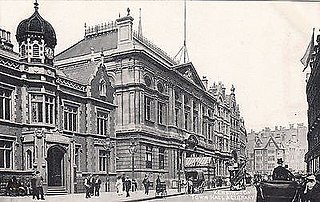
The old Town Hall was a municipal facility at Kensington High Street in Kensington, West London. It was demolished in 1982.

Berkhamsted Town Hall is a Grade II listed municipal building in the High Street, Berkhamsted, Hertfordshire, England.

The Town Hall, Christchurch is a municipal building in Christchurch, Dorset, England. The building, which incorporates a room known as the mayor's parlour on the first floor, and is a Grade II listed building. It is currently the base of Christchurch Town Council.
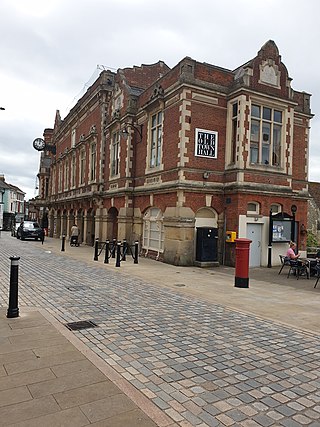
The Old Town Hall is a municipal building in the High Street, Hemel Hempstead, Hertfordshire, England. The town hall, which was the meeting place of Hemel Hempstead Borough Council, is a Grade II listed building.

Dudley Council House is a municipal building in Priory Road, Dudley, West Midlands, England. The Council House, which is the meeting place of Dudley Metropolitan Borough Council is a Grade II listed building.
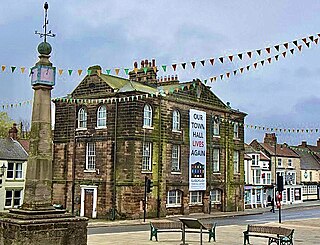
Guisborough Town Hall is a municipal building on Westgate in Guisborough, North Yorkshire, England. The structure, which has mainly been used as a venue for magistrates' court hearings, is a Grade II listed building.

The Forum is a municipal building in Marlowes, Hemel Hempstead, Hertfordshire, England. The building accommodates the meeting place and offices of Dacorum Borough Council as well as the local library.

Sunderland Town hall was a municipal building in the Fawcett Street in Sunderland, Tyne and Wear, England. It was the headquarters of Sunderland Borough Council until November 1970.

Ashton-in-Makerfield Town Hall, formerly Ashton-in-Makerfield Urban District Council Offices, was a municipal building in Bryn Street, Ashton-in-Makerfield, a town in Greater Manchester, England. The building, which served as the offices and meeting place of Ashton-in-Makerfield Urban District Council, was demolished in 2017.

